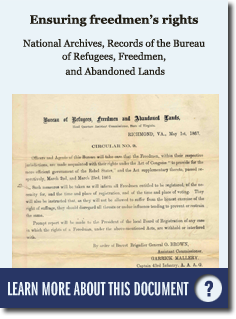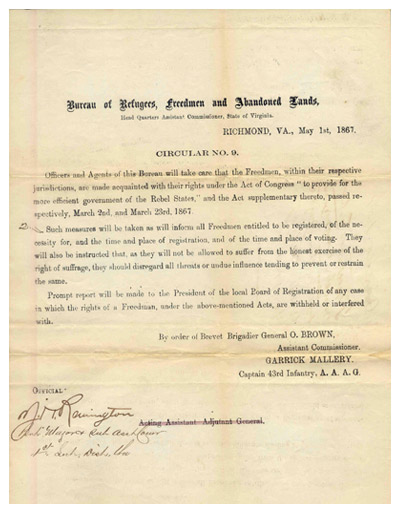At the end of the Civil War, the South lay devastated. Many of its people were refugees. About 250,000 Confederate soldiers had died. And 4 million newly freed people were living alongside their former owners.
Many Americans - North and South - desired reconciliation. But there were no guidelines on how to create a new social, political, and economic order.
How did the South begin to rebuild itself?
How did former slaves begin to shape their lives as free people?
What role did the Federal Government play?
Explore some of the evidence from this complicated and controversial era.



